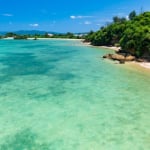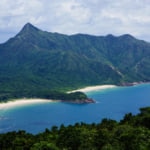Name: Tomogashima Information Center
Address: 2673 Tomoga-Oki Island, Kada, Wakayama City, Wakayama Prefecture
Official Website: https://bit.ly/2RnbwY9
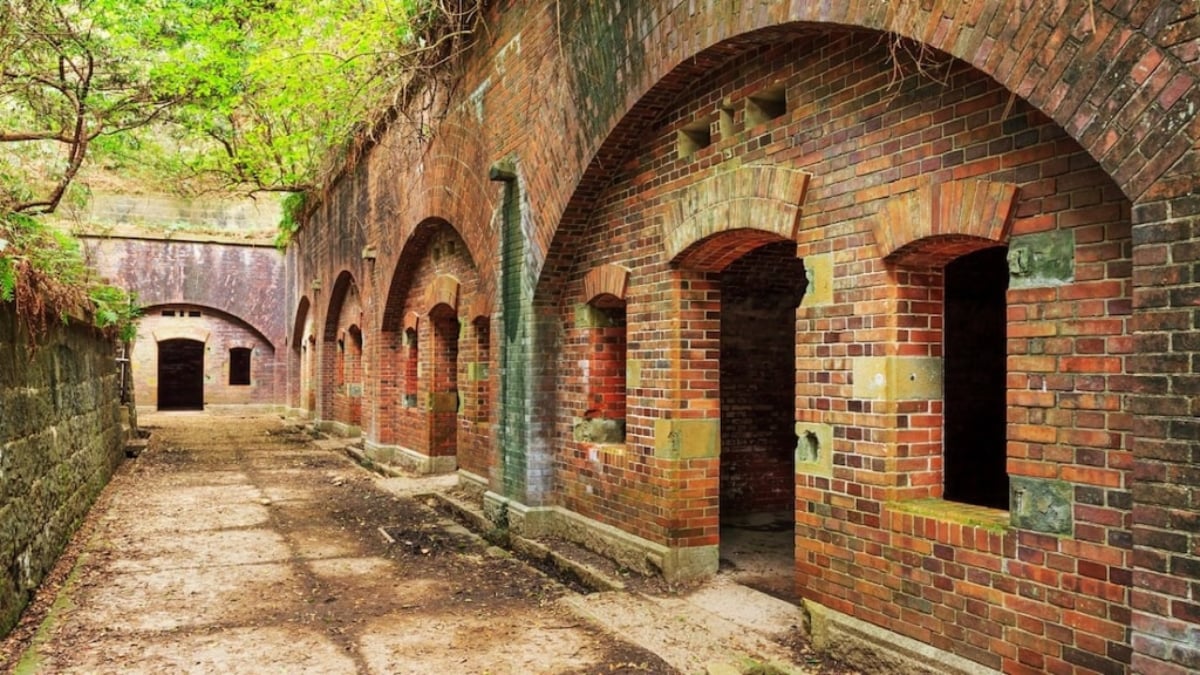
Discover the History, Tourist Attractions, and Access to Tomogashima in Wakayama!
Floating in the Kitan Strait off the coast of Wakayama City in Wakayama Prefecture, Tomogashima is a group of uninhabited islands that includes Okinoshima, Torajima, Kamijima, and Jinoshima. Of these, Okinoshima is the primary island open to tourists.
Visitors can enjoy exploring or camping amid lush nature—which is designated a natural monument by the prefecture—and brick buildings covered in greenery, remnants from the past. Some of these buildings look strikingly similar to scenes from a certain Studio Ghibli movie, which has helped increase the island's popularity through TV programs and social media.
In this article, we’ll introduce the charm of Tomogashima, how to get there, and nearby accommodation options.
table of contents
[x] close
Discover the History, Tourist Attractions, and Access to Tomogashima in Wakayama!
- 1. The History of Tomogashima
- 2. Highlights of the First to Fifth Battery Ruins
- 3. Tomogashima Campsites
- 4. Minami Tarumi Plaza & Ikejiri Plaza
- 5. Ikejiri Beach & Swimming Season
- 6. Tomogashima Ferry Schedule and Fares
- 7. Access Information
- 8. Lodging Near Tomogashima
- ◎ Tips for Walking Around the Island
1. The History of Tomogashima
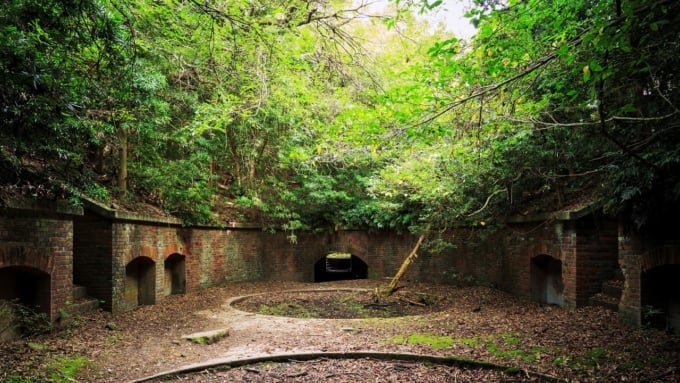
Tomogashima first appears in Japanese history in 1854, when the Kishu Domain, under orders from the shogunate, stationed domain retainers on the island. Since then, Tomogashima has served as a strategic point protecting the Kitan Strait and, by extension, the gateway to the major city of Osaka. In 1888, it was designated as a military zone.
Numerous batteries and fortresses were constructed, and the general public was prohibited from entering the island until the end of World War II. However, in 1949, it became part of the Setonaikai (Inland Sea) National Park, and as it was developed into a tourist destination, more and more visitors began coming to the island, leading to its current popularity.
2. Highlights of the First to Fifth Battery Ruins
◆ First Battery Ruins
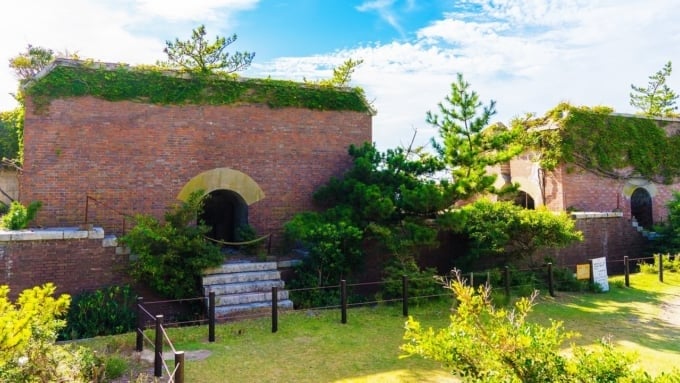
On Tomogashima—once off-limits to the general public—several artillery battery ruins constructed by the military remain intact. The First Battery Ruins are located on the western tip of Okinoshima Island, near the brilliantly white Tomogashima Lighthouse Ruins.
This area is also the southernmost point in Japan through which the 135° east meridian passes. Near the lighthouse, a Meridian Plaza has been set up. Be sure to visit both the battery ruins and this unique geographical landmark.
◆ Second Battery Ruins
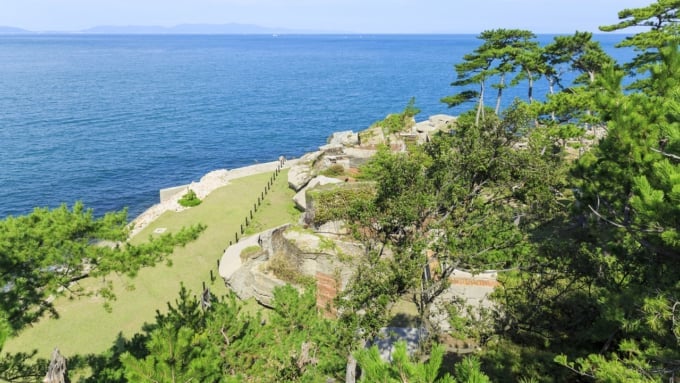
Although you cannot enter the interior of the Second Battery Ruins, it is well-known for its scenic views. Part of the structure was destroyed during post-war demolition, and through the collapsed walls, you can enjoy a beautiful yet fleeting view of the blue sea and sky beyond the ruins.
◆ Third Battery Ruins
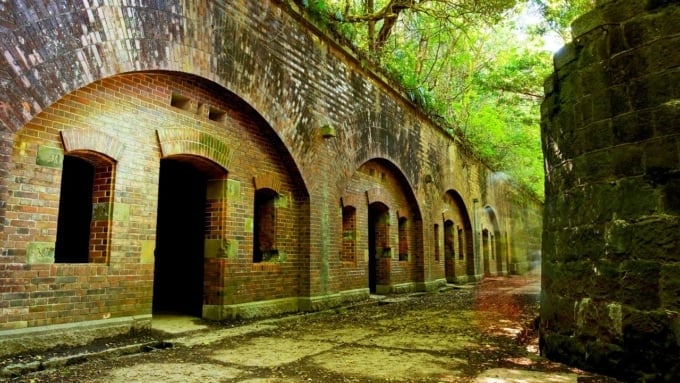
The most famous of them all, the Third Battery Ruins, are the largest of Tomogashima’s artillery sites. The contrast between the lush green vegetation and the weathered reddish bricks is visually striking, making it an ideal photo spot. You are free to explore the interior as well, so take your time and enjoy wandering through the site.
◆ Fourth & Fifth Battery Ruins
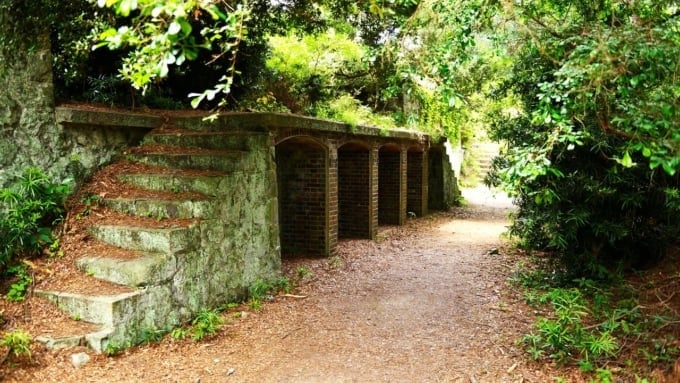
Compared to the more popular Third Battery, the Fourth and Fifth Battery Ruins are lesser known and not as well maintained. This makes them ideal for visitors who want to soak in the atmosphere quietly or experience a more rugged, abandoned vibe.
Note: Entry to the Fourth Battery Ruins is prohibited, so it can only be viewed from the outside.
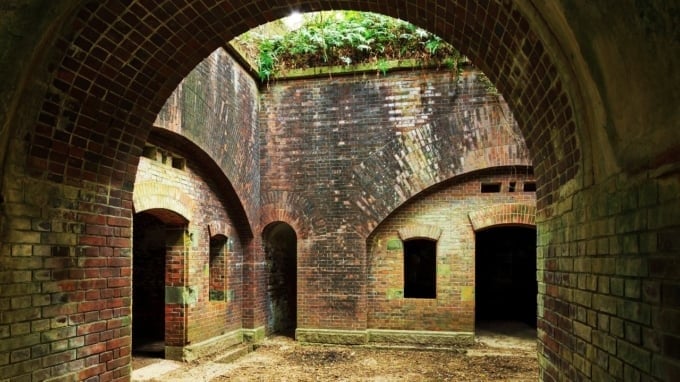
In 2019, a new service linked to a smartphone audio AR app was launched on Tomogashima. As you approach specific locations, audio explanations play automatically, offering deeper insights into the history and structure of the battery ruins. Especially noteworthy is the Third Battery Ruins, which has been dubbed the “Tomogashima Third Battery Museum”, providing a unique, immersive space. Be sure to take advantage of this feature during your visit!
3. Tomogashima Campsites
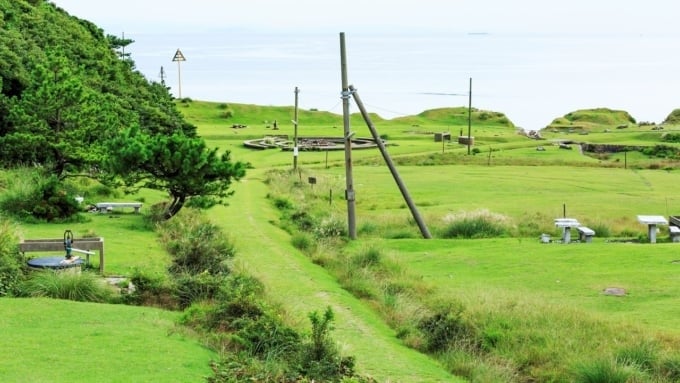
At Minami Tarumi Plaza, Kita Tarumi Plaza, and Ikejiri Plaza on Tomogashima, you can camp for free (except during winter) if you contact the Tomogashima Information Center in advance. Since it’s an uninhabited island, there’s no one to disturb your camping experience!
There are no artificial lights or noise, so you can enjoy the star-filled night sky and the unique peacefulness of an uninhabited island. In designated areas, you’re allowed to use portable stoves and fire pits, so you can cook hot meals and enjoy a relaxing camping experience in your tent.
4. Minami Tarumi Plaza & Ikejiri Plaza
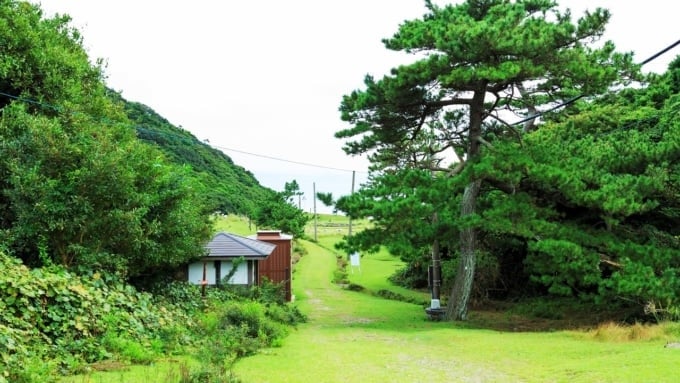
Both Minami Tarumi Plaza and Ikejiri Plaza have toilet facilities and are flat open spaces, making them ideal for taking breaks! You can also bring food and drinks and enjoy a picnic.
Minami Tarumi Plaza has a grassy field, perfect for both camping and recreational activities. Meanwhile, Ikejiri Plaza, located by the sea, offers a relaxing view of the ocean right in front of you. Besides these two, there are other resting spots on Tomogashima like Kita Tarumi Plaza and the Takanosu Mountain Observatory. If you get tired from walking, be sure to drop by these places!
5. Ikejiri Beach & Swimming Season
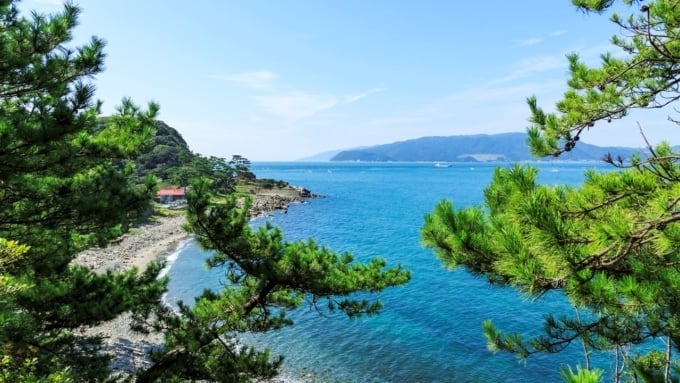
Near the Fifth Battery Ruins, Ikejiri Beach and other beaches on Tomogashima offer various seaside activities such as swimming, fishing, and snorkeling.
There isn’t a fixed “season,” but ferries increase in frequency during summer vacation, making it easier to plan a beach trip. Near Ikejiri Beach, there is also a beach hut where you can buy light meals and drinks—very convenient! If you’re not fond of crowded beaches, Tomogashima’s secluded Ikejiri Beach is a fantastic place to enjoy marine fun in peace.
6. Tomogashima Ferry Schedule and Fares
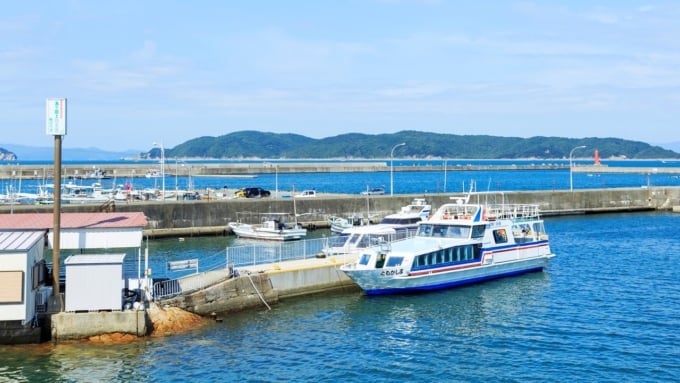
The Tomogashima Ferry, which connects Tomogashima Island to the nearest port, Kada Port, operates on a variable schedule depending on the season. From December 1st to the end of February, the ferry only runs on weekends and national holidays, excluding the New Year period from December 29th to January 3rd. Outside of this winter period, the ferry does not operate on Wednesdays.
The regular departure times from Kada Port are 9:00, 11:00, 13:00, and 16:00, while departures from Tomogashima are at 9:30, 11:30, 13:30, and 16:30. During peak tourist seasons—from April 28th to May 6th, and from July 20th to August 31st—additional temporary ferries run at 10:00 and 15:00 from Kada Port, and at 10:30 and 15:30 from Tomogashima.
Reservations are generally not accepted, so please be aware. From the second departure onward, boarding tickets are distributed on the day of travel. During the busy spring and summer seasons, tickets can run out quickly, so it's best to arrive as early as possible. If you have more than one piece of luggage, extra charges will apply depending on the weight, so try to minimize your belongings or consolidate them into one item.
Name: Tomogashima Ferry
Address: Kada, Wakayama City, Wakayama Prefecture
Round-trip fare: Adults 2,000 yen, Children 1,000 yen
Official/Related Website: http://tomogashimakisen.com/
7. Access Information
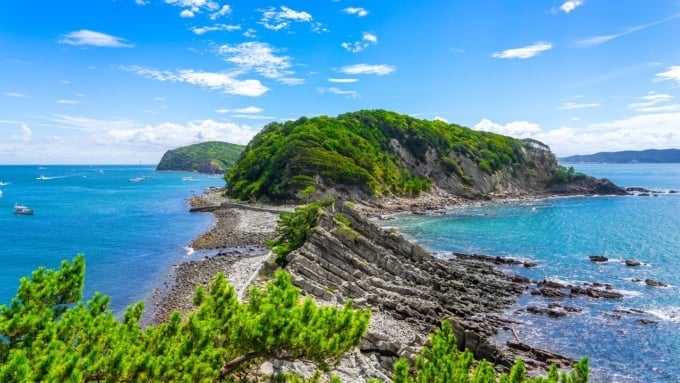
To reach Tomogashima, first head to Kada Port by either train or car. If you are taking the train, it is approximately a 16-minute walk from Kada Station, the last stop on the Nankai Electric Railway Kada Line.
If traveling by car, it takes about 45 minutes from the Sennan Interchange (IC) on the Hanwa Expressway via the Tannowa ramp, or about 60 minutes from the Izumisano-Minami IC via the same ramp. Alternatively, it is around 40 minutes from the Wakayakita IC and approximately 45 minutes from the Wakayama IC. Parking is available for 700 yen per day. From Kada Port, you can take the Tomogashima Ferry, which will bring you to Tomogashima in about 20 minutes.
8. Lodging Near Tomogashima
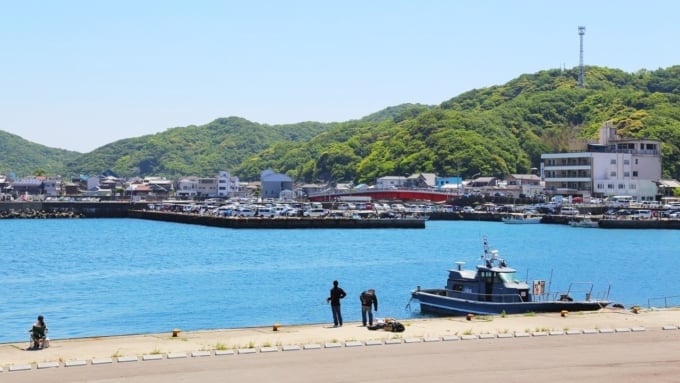
While it’s possible to stay at a beach hut on Tomogashima, it is highly recommended to book a hotel near Kada Port for more comfort.
● Kada Onsen Seaside Hotel Kada Kaigetsu
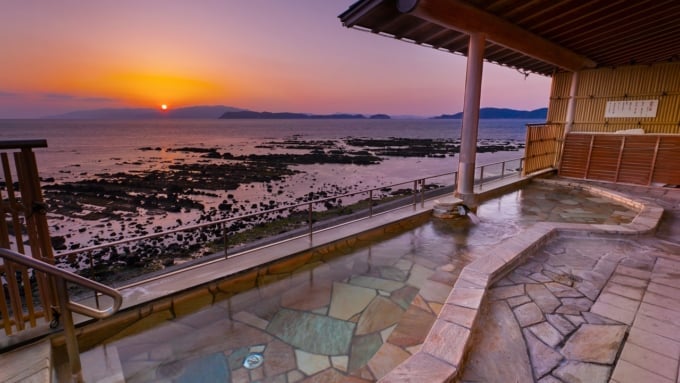
This hot spring inn is about an 18-minute walk from Kada Port. It features the famous "Bijin-no-Yu" (Beauty Hot Spring), known for beautifying the skin. You can enjoy both indoor baths and open-air baths with ocean views.
Guests can also enjoy fresh seafood cuisine, and the location is only a 2-minute walk to Awashima Shrine, making it convenient for sightseeing.
Address: 1905 Kada, Wakayama City, Wakayama Prefecture
Price: From ¥10,650 (for 2 people / 1 room / 1 night)
Rating: ★ 4.4 / 5 (based on 1,498 reviews)
● Kada Awashima Onsen Osakaya Hiina no Yu
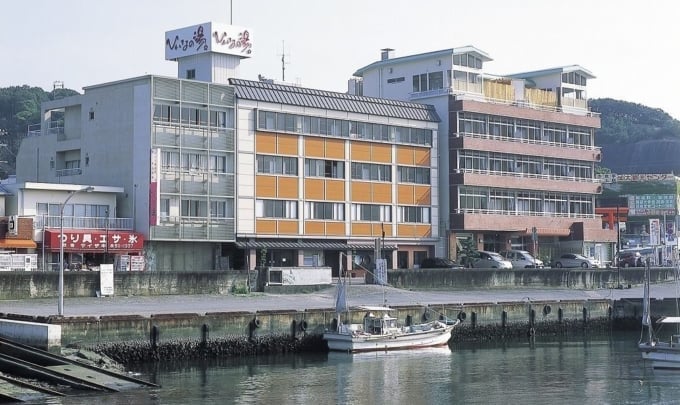
This ryokan is about a 16-minute walk from Kada Port. It's famous for both its fresh seafood dishes and sunset views, having been selected as one of the Top 100 Inns for Sunset Views.
The inn features open-air baths such as a "Boat Bath", shaped like a ship, and a rock bath that overlooks Tomogashima. The natural hot spring is also said to be good for the skin.
Address: 142 Kada, Wakayama City, Wakayama Prefecture
Price: Varies (2 people / 1 room / 1 night)
Rating: ★ 4.6 / 5 (based on 298 reviews)
◎ Tips for Walking Around the Island
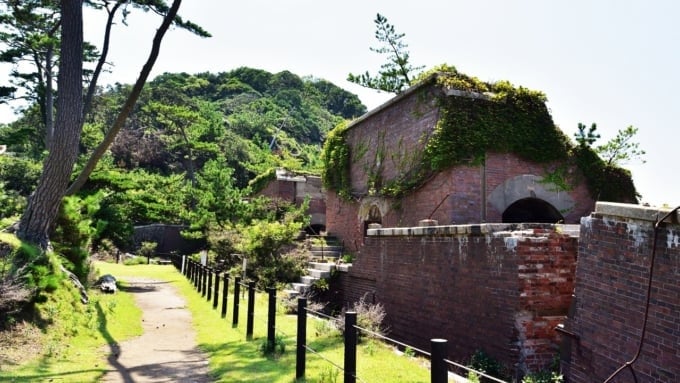
Tomogashima is part of the Setonaikai National Park, rich in nature. The island is home to about 400 plant species, including wetland plants designated as a natural monument of Wakayama Prefecture.
To preserve this environment, do not collect or trample plants. Some of the battery ruins are restricted and not open to the public, so always look for fences or signs before entering any structure.
Though exploring both nature and historical ruins is part of the island’s charm, there are uneven paths and elevation changes, so wear comfortable walking shoes. Bringing a flashlight for exploring darker structures and insect repellent is also recommended.
You can also visit Torajima, the small island connected to Okinoshima. However, access is cut off during high tide, so make sure to check the tide schedule and allow plenty of time for the visit.
RELATED ARTICLES
REGIONS
CATEGORIES
FEATURED ON Wakayama
-
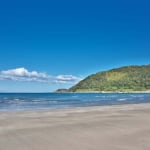
4 Recommended Sightseeing Spots in Hidaka Town, Wakayama Prefecture
-
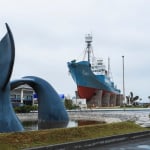
Taiji Town, Wakayama Prefecture: The Birthplace of Japanese Whaling! 5 Recommended Whale-Related Tourist Spots
-
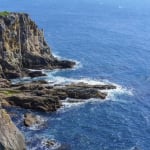
[Shirahama Town, Wakayama Prefecture] Sandanbeki Sightseeing Guide | Experience the Overwhelming Power of the Sea
-
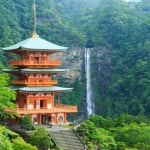
Savor Fresh Tuna in a Town of Mysterious World Heritage! 7 Must-Visit Tourist Spots in Nachikatsuura
-
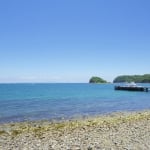
6 Must-Visit Tourist Spots in Kada, Wakayama
MOST POPULAR ON Wakayama
-
 1
1Doha: Must-see Attractions in the Capital of Qatar
-
 2
2Toronto: 10 Things to do in this Picturesque Canadian City
-
 3
3Amarillo: A City Famous for It’s Amazing Canyons, Great History and Music
-
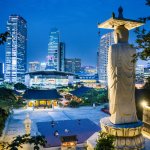 4
4South Korea: Dazzling Scenery, Rich Culture and Fascinating History
-
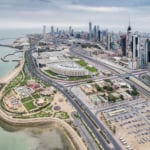 5
5Kuwait: A Country in Middle East Asia Famous for Hot Sand Dunes and Stunning Cityscape




